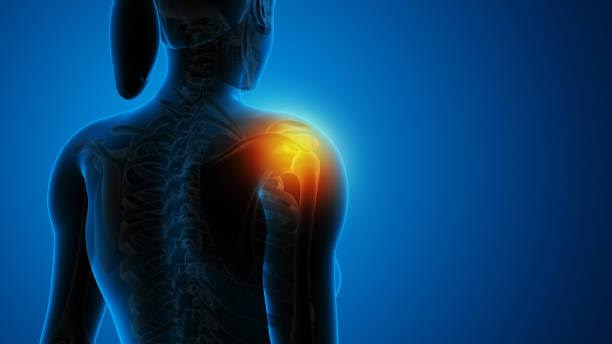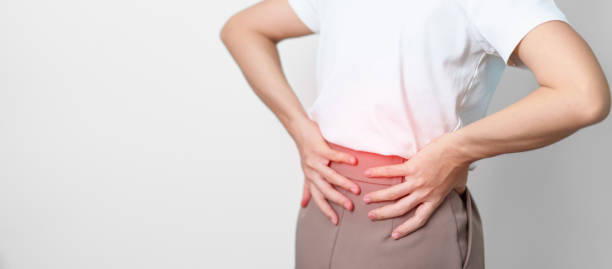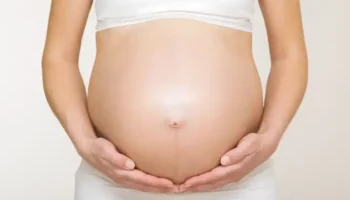Body soreness, aching, and pain are often experienced during perimenopause and menopause, yet these symptoms are sometimes overlooked. As your body undergoes hormonal changes, many women find that body aches become more frequent and intense. In this post, we’ll explore why body soreness, aching, and pain are common during these life stages, and provide practical tips for managing them. We’ll also discuss science-backed remedies that can help relieve discomfort, giving you better insight into how to cope with body hurts during this transitional period. Understanding the connection between hormonal changes and physical discomfort can empower you to navigate menopause with greater ease and confidence.
How Hormonal Changes Cause Body Soreness and Pain
Hormones are powerful regulators of the body, influencing everything from mood to physical function. During perimenopause and menopause, the decrease in estrogen and progesterone can lead to significant physical changes, including body soreness and aches. Here’s how hormonal shifts contribute to these discomforts:

- Estrogen and Muscle Function
Estrogen plays a crucial role in maintaining muscle mass, strength, and function. When estrogen levels begin to drop during perimenopause and menopause, the body may lose muscle mass more rapidly, leading to weakness, stiffness, and discomfort. Many women experience aching in muscles or joints, particularly in areas like the back, shoulders, and hips. According to a study published in the Journal of Women’s Health (2009), lower estrogen levels result in a decrease in lean muscle mass, contributing to aches and discomfort. - Increased Inflammation
As estrogen declines, inflammation in the body can increase. Estrogen is known to have anti-inflammatory effects, and its decrease during menopause may lead to an uptick in inflammatory markers, which contribute to joint pain and body soreness. This can also lead to more widespread body aching. A study in the Journal of Clinical Endocrinology and Metabolism (2003) emphasized that menopause-related hormonal changes can increase systemic inflammation, leading to joint and muscle pain. - Reduced Blood Circulation
As blood circulation decreases due to lower estrogen levels, many women may experience a heightened sensitivity to body soreness. Poor circulation can lead to muscle cramps and tension, causing localized aches in the body, especially in the legs, lower back, and neck. Additionally, when blood flow is restricted, muscles may not receive the necessary nutrients and oxygen needed for optimal recovery, which can intensify body aches. - Sleep Disruptions
Sleep problems are common during perimenopause and menopause, often due to hot flashes, night sweats, and hormonal shifts. Poor sleep affects muscle recovery and increases pain sensitivity, leading to greater body soreness. Research published in Sleep Health Journal (2016) revealed that women experiencing sleep disturbances tend to report heightened pain perception, making body aches feel more intense. Without restorative sleep, the body struggles to repair muscle tissue and reduce pain, leading to more persistent body hurting.

Common Areas of Body Soreness and Pain During Perimenopause and Menopause
Women undergoing perimenopause and menopause frequently report pain and discomfort in specific areas of the body. The most common regions for body aches include:
- Neck and Shoulders: Tension and tightness often occur in the neck and shoulder areas. Hormonal fluctuations can lead to poor posture or muscle spasms, both of which can cause significant discomfort and body soreness.
- Lower Back: As estrogen decreases, muscles supporting the spine weaken, which can lead to chronic back pain. Lower back aches are particularly common and can affect daily activities.
- Legs and Joints: Joint pain and stiffness can be a direct result of the drop in estrogen levels. Conditions like osteoarthritis or generalized joint discomfort may be aggravated during menopause, contributing to aching in the knees, hips, and legs.
- Muscle Cramps: A significant number of women experience muscle cramps or spasms, particularly at night. This can be linked to hormonal imbalances as well as nutrient deficiencies, such as low levels of magnesium or calcium, which are common during menopause.
Managing and Relieving Body Soreness and Pain During Perimenopause and Menopause
Although body soreness and pain can be frustrating, there are several strategies you can incorporate into your routine to reduce discomfort. Here are some effective ways to manage body aches during perimenopause and menopause:
- Exercise Regularly
Maintaining an active lifestyle is key to reducing body soreness and strengthening muscles. Regular physical activity, such as walking, swimming, or yoga, can help alleviate muscle tension, improve circulation, and reduce the intensity of body aches. A study published in Maturitas (2015) found that physical activity significantly reduced pain perception in postmenopausal women, offering a natural remedy for body soreness and muscle pain. - Stretching and Yoga
Stretching exercises and yoga can be particularly beneficial for relieving body soreness and promoting relaxation. The gentle movements involved in yoga help to improve flexibility, reduce muscle stiffness, and improve posture. These benefits may significantly alleviate body aches, especially in areas like the lower back and neck. - Stay Hydrated
Dehydration can exacerbate muscle cramps and body aches. Drinking plenty of water throughout the day helps prevent muscle spasms, supports circulation, and aids in muscle repair. Proper hydration is vital for keeping muscles relaxed and reducing overall body discomfort. - Proper Nutrition
A balanced diet rich in vitamins and minerals is essential for combating body aches and soreness. Calcium, magnesium, and vitamin D are particularly important for muscle and bone health. Omega-3 fatty acids, found in foods like fish, flaxseed, and walnuts, have anti-inflammatory properties that can help reduce muscle pain and joint soreness. Adequate intake of these nutrients can minimize body soreness and body aches related to menopause. - Consider Hormone Replacement Therapy (HRT)
For women experiencing significant body aches and soreness during menopause, hormone replacement therapy (HRT) may provide relief. By replenishing estrogen levels, HRT can alleviate muscle and joint pain. However, it’s important to discuss with your healthcare provider whether HRT is right for you. Research from The Journal of Rheumatology (2013) found that HRT can reduce musculoskeletal pain and body soreness by restoring estrogen to more balanced levels. - Heat and Cold Therapy
Applying heat or cold to sore areas can provide immediate relief. Heat therapy, such as hot packs or warm baths, can relax muscles and ease stiffness, while cold packs can help reduce inflammation and numb pain. Alternating between heat and cold can be especially effective for relieving body aches and muscle soreness in areas like the back and joints. - Stress Reduction Techniques
Stress can contribute to muscle tension, increasing the severity of body soreness and aches. Relaxation techniques such as meditation, deep breathing exercises, and mindfulness practices can help reduce stress and alleviate muscle tension. Lowering stress levels can significantly reduce the intensity of body hurting and overall discomfort. - Supplementation
Certain supplements, such as magnesium and vitamin D, may help reduce body aches and soreness by supporting muscle function and bone health. Omega-3 supplements are also known to reduce inflammation, which can help with joint pain and stiffness during menopause. Be sure to consult with your healthcare provider before starting any new supplement regimen.
Conclusion
Body soreness, aching, and pain are common complaints during perimenopause and menopause, but understanding their causes and learning how to manage them can provide significant relief. By incorporating regular exercise, improving nutrition, managing stress, and utilizing remedies like heat therapy or HRT, you can reduce the impact of body aches on your daily life. If you experience persistent body pain, it’s essential to consult with a healthcare provider to explore treatment options and ensure your symptoms are effectively managed.
Navigating perimenopause and menopause may come with its challenges, but with the right approach, you can manage body soreness and aches, maintaining a sense of well-being throughout this transformative stage of life.







